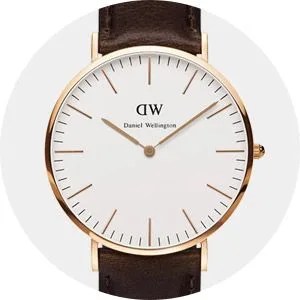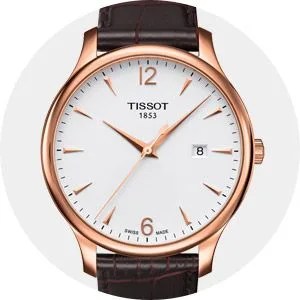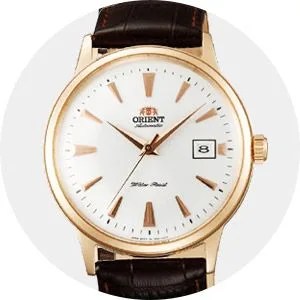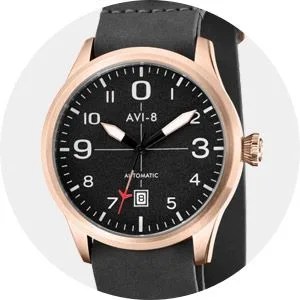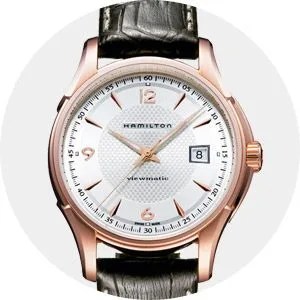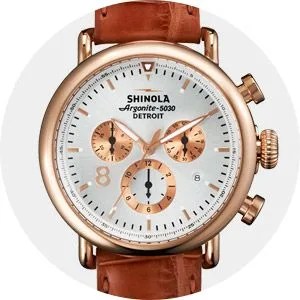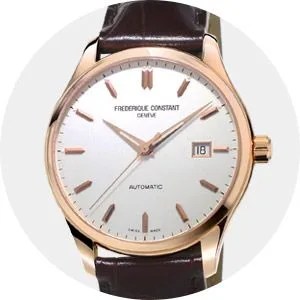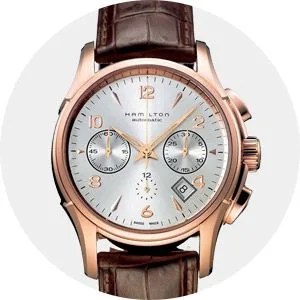There’s something about a watch you could actually buy with your current bank account, right now, that gets the heart thumping and the synapses firing. These watches — specifically, the ones that cost less than $1,000, many of them less than $500 — are the subject of our new series “Time Is Money“.
If you’re buying a gold watch today, says James Lamdin, a vintage watch collector and the founder and CEO of online vintage watch boutique analog/shift, it’s very likely to be rose gold. “For my own clients and myself, yellow gold — particularly two-toned yellow gold — conjures images of 1980s, dangling Datejusts, a sleazy uncle from Jersey, and retirees”, Lamdin told me in a recent phone interview. “For the current generation… it just seems old.”
Whether rose, yellow, white, pink or red, gold is part of a growing watch trend of a return to precious metals in the last three to five years, previously dominated by steel sports watches. Though rose gold (given its reddish tint through a small addition of silver to its blend of gold and copper) is on the modern tip of that trend, it’s been used in wristwatches and pocket watches just as long as those other golds have been, Lamdin said; its current boom is mostly due to a cyclical style paradigm that shifts based on what wearers perceive as “old” — i.e., what color gold your sleazy uncle wore at the Thanksgiving dinner table.
Gold being a soft metal, watch cases made of the stuff tend to “ding, dent, scratch and otherwise be damaged” very easily, Lamdin said. Oh, and with gold going for around $1,280 per ounce right now, a watch made solidly of the stuff costs about as much as a midsize sedan.
And indeed, lent to a dress watch or sleek chronograph, the auburn tint of rose gold elevates the air of luxury but isn’t gaudy. But there are a few problems. Because they’re made of solid gold, which at present goes for about $1,280 per ounce, rose gold watches inherently cost as much as a midsize sedan. Gold being a soft metal, those insanely pricey pieces also tend to “ding, dent, scratch and otherwise be damaged” very easily, Lamdin said. It’s a harrowing combination for a potential owner, and a prohibitive one for the bank accounts of most.
There are more affordable solutions, ones that’re far from perfect, little discussed among serious watch collectors and not covered in depth on the web: gold plating and PVD (physical vapor deposition), wherein thin layers of gold (measured in microns) are applied to a stainless steel case. The market for these methods feels a bit like the Wild West: the stakes are high, help and information are scarce, things all feel a bit under the table, and everyone’s trying to get a piece, however small, of the shiny bullion that’s locked away down at the town bank (or somewhere in the well-firewalled pages of Amazon).
As Lamdin put it, gold-plated watches aren’t looked down upon by serious collectors so much as they’re ignored; they’re not considered precious metals nor are they considered base metals. Buying one can, however, make sense for buyers on a budget: many vintage gold-plated watches actually sell for less than their steel counterparts, and plate and PVD rose gold watches go for fractions of the cost of their solid gold brethren. I asked Lamdin to lend his expertise on the subject for those who are looking to spend hundreds or thousands on a rose gold watch rather than tens of thousands, and searched for some of the best examples that cost less than $2,000.


